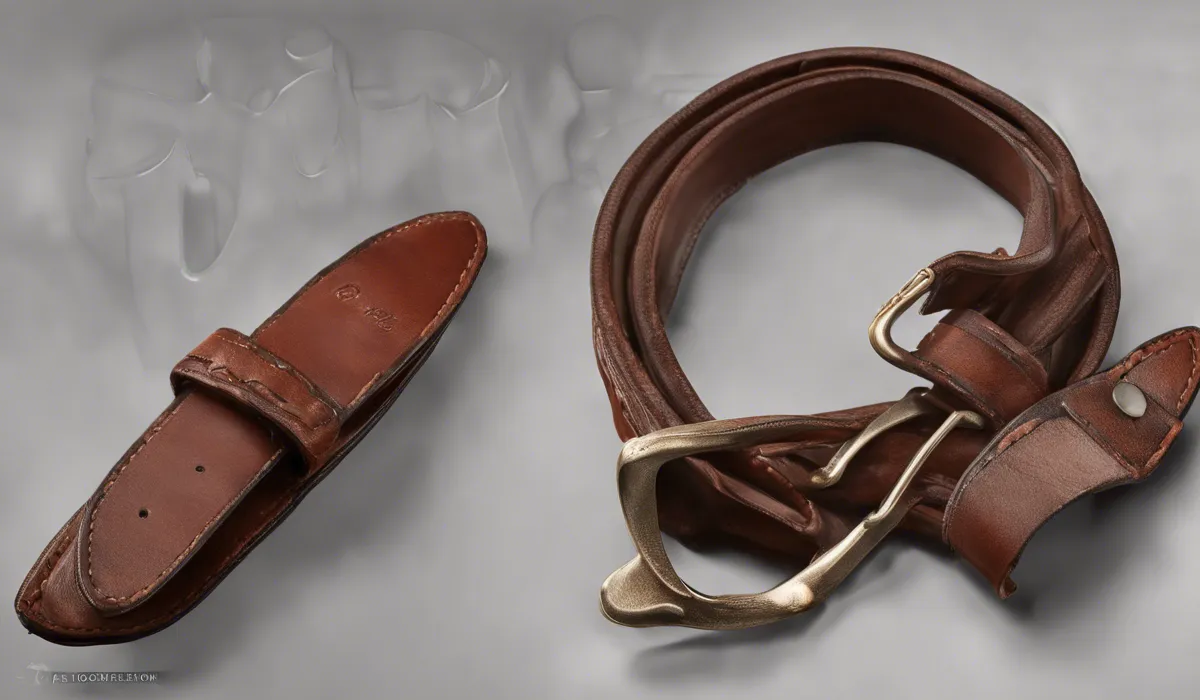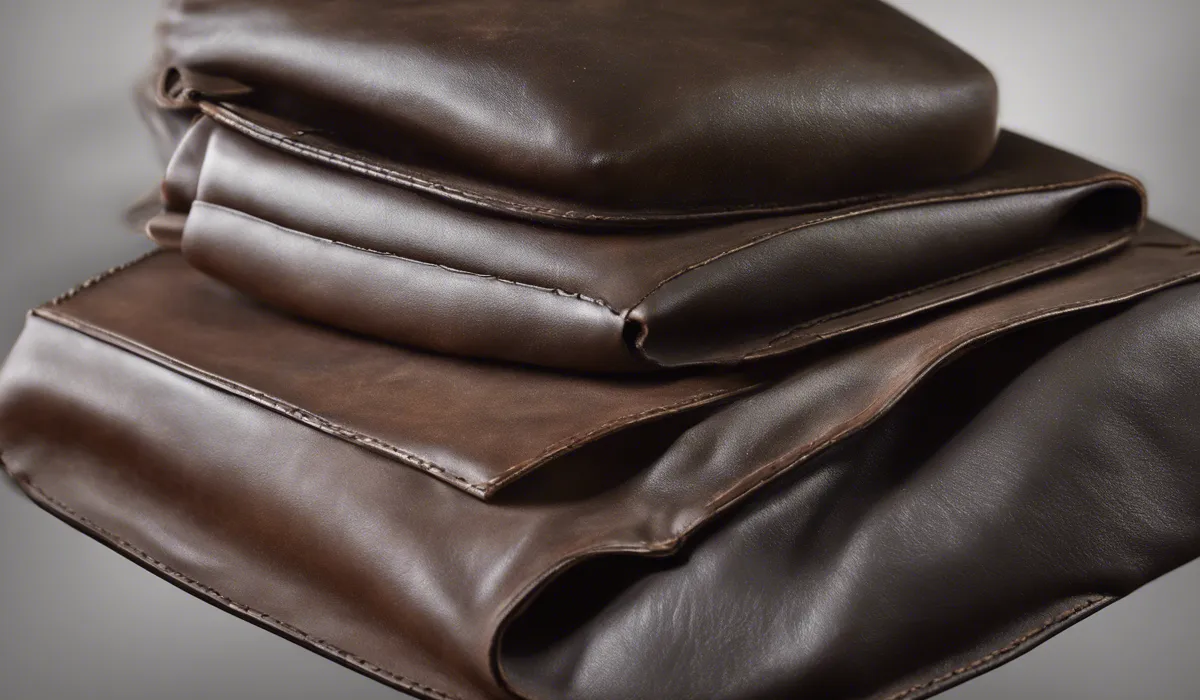Leather molds due to moisture. When leather items remain damp or are stored in humid conditions, mold spores thrive, causing the visible growth. To prevent this, keep leather dry and well-ventilated.
Causes of Leather Molding

Presence of Moisture
Leather, a material cherished for its durability and aesthetic appeal, has a significant vulnerability: it is prone to mold when exposed to moisture.
This susceptibility arises because mold spores, omnipresent in the air, find a welcoming habitat in damp leather.
These spores germinate and multiply rapidly, leading to the familiar unsightly spots and musty odors associated with moldy leather.
To prevent this, it is crucial to ensure that leather items remain dry, as even a small amount of moisture can initiate the growth of mold.
Lack of Ventilation
Restricted airflow is another culprit in the battle against leather molding. Leather goods stored in tight spaces or wrapped in non-breathable materials are deprived of air circulation.
This lack of ventilation creates a microenvironment where humidity can build up, and mold spores can settle and propagate.
For this reason, choosing storage solutions that allow leather to breathe is an essential step in mold prevention.
Organic Material in Leather
Leather is an organic material made from animal hides, which inherently contain nutrients that mold can consume.
These organic compounds, if not properly treated, provide a feast for mold spores. As a natural material, leather requires careful maintenance to prevent these organic elements from becoming a breeding ground for mold.
Environmental Conditions Favoring Mold Growth
Environmental conditions such as warm temperatures and high humidity are prime factors that encourage mold growth on leather.
Areas with these conditions, like basements or tropical climates, necessitate extra vigilance and care when storing leather goods to prevent mold from taking hold.
Improper Storage
Storing leather improperly can lead to its deterioration. Leather items should not be kept in plastic bags or containers, as these can trap moisture and restrict air movement.
Instead, they should be stored in cool, dry places away from direct sunlight to minimize the risk of mold growth.
Proper storage is as crucial as the material’s inherent quality to ensure the longevity of leather goods.
Prevention of Leather Molding

Proper Cleaning Techniques
Regular cleaning is vital in preserving the pristine condition of leather. By removing dirt and residues that can harbor moisture and mold spores, you are actively preventing potential mold issues.
It is important to use cleaners specifically designed for leather, as other types of cleaners may be too harsh and cause additional damage or drying.
Adequate Storage Conditions
Ensuring that leather goods are stored in well-ventilated, dry environments can greatly reduce the risk of mold.
Leather should not be kept in damp basements or closets without airflow. Instead, consider storing items in spaces with stable temperature and humidity, or using climate control solutions if necessary.
Use of Desiccants and Moisture Absorbers
Moisture absorbers and desiccants can be a leather owner’s best friend in the fight against mold.
These products help to maintain a dry environment, especially in enclosed spaces such as drawers or boxes where leather items might be stored.
Silica gel packets, for example, are an effective option for absorbing excess moisture that could otherwise lead to mold growth.
Conditioning and Protection
Leather conditioners not only keep leather supple and prevent cracking but can also offer a degree of protection against mold.
After cleaning, applying a conditioner can help to create a barrier that reduces the leather’s susceptibility to moisture and mold spores.
Be sure to use products appropriate for the type of leather you are treating.
Regular Inspection and Maintenance
Consistently checking leather items for signs of mold can catch problems early before they escalate.
Regular maintenance, such as dusting and airing out leather goods, can prevent the conditions that allow mold to flourish.
Active and ongoing care will extend the life and appearance of leather products significantly.
Treatment of Mold on Leather

Initial Steps for Treating Moldy Leather
If you discover mold on a leather item, immediate action is required. Begin by taking the item outside to prevent mold spores from spreading indoors.
Gently brush off any loose mold with a soft brush, being careful not to grind the spores into the leather.
After brushing, leave the leather in a dry, sunny spot for a short period, as sunlight can help kill some of the mold spores.
Cleaning Agents and Techniques
Cleaning mold from leather should be done with care and appropriate products. A mild soap solution or a mixture of water and vinegar can be used to clean the leather gently.
It’s important to test any cleaning solution on a small, inconspicuous area first to ensure it does not damage the leather.
Use a soft cloth to apply the solution, and never soak the leather as this can cause additional issues.
Drying and Conditioning After Treatment
After cleaning, the leather must be thoroughly dried. Avoid using heat sources like hair dryers, as these can cause the leather to become brittle.
Instead, let the leather air dry slowly in an area with good ventilation. Once dry, apply a leather conditioner to restore moisture to the fibers and maintain the leather’s flexibility.
When to Seek Professional Help?
If the mold infestation is severe or if you are unsure about the appropriate treatment, it might be time to seek professional help.
Leather restoration specialists have the expertise and tools necessary to treat mold damage effectively.
Remember, the sooner you address mold on leather, the better the chances of fully restoring the item.
Long-term Care to Prevent Recurrence
To ensure that mold does not return, long-term care and preventive measures should be part of your routine.
Regular cleaning and conditioning, proper storage, and the use of moisture absorbers can all contribute to keeping leather in top condition.
Vigilance and maintenance are key to preventing the recurrence of mold on your valued leather items.
FAQs About Why Leather Molds
Why does leather get moldy?
Leather gets moldy because it is a natural material that absorbs moisture, and when it remains damp or is stored in humid conditions, mold spores can thrive and cause visible growth.
What causes mold to grow on leather items?
Mold grows on leather items primarily due to the presence of moisture and humidity, which create an ideal environment for mold spores to proliferate.
How can I prevent my leather goods from molding?
To prevent leather goods from molding, keep them dry and store them in a well-ventilated area away from excessive humidity.
Is mold on leather permanent?
Mold on leather is not necessarily permanent; it can often be removed through thorough cleaning and proper care, although severe cases may cause irreversible damage.
Can moldy leather be restored?
Yes, moldy leather can often be restored with proper cleaning using a mild detergent or a specialized leather cleaner, followed by conditioning to restore its flexibility and prevent future growth.
Final Thoughts
Leather molds because it is susceptible to moisture, which provides the ideal conditions for mold spores to thrive.
If leather items remain damp or are stored in humid environments, mold growth becomes a visible problem.
Maintaining dryness and ensuring adequate ventilation are key to preventing mold on leather goods.
